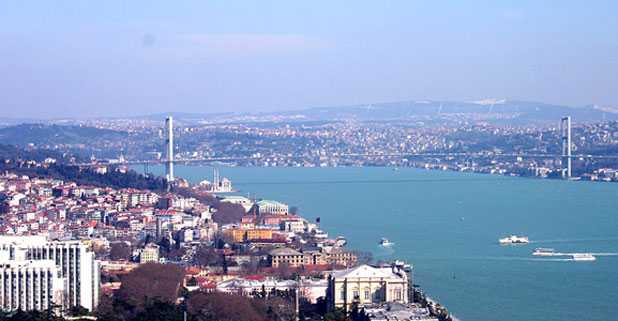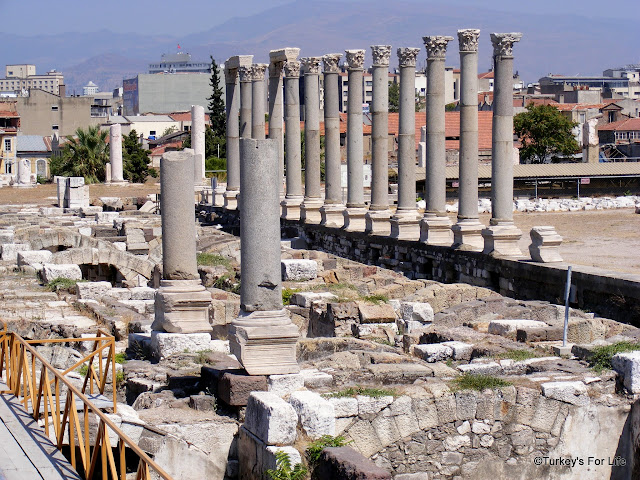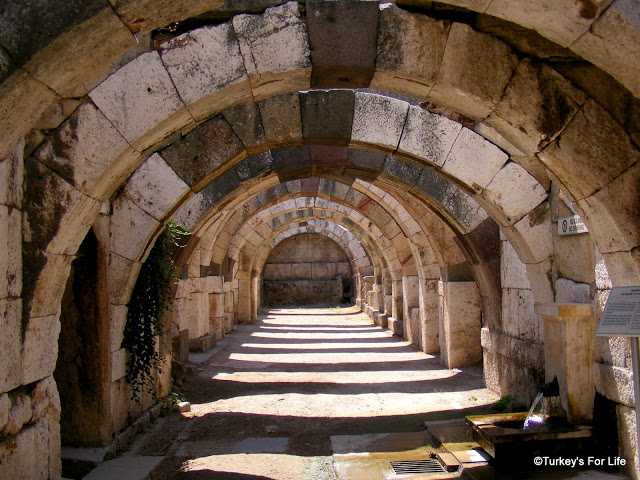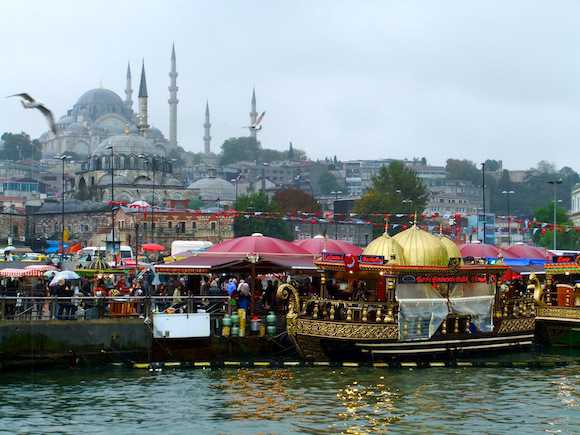The country of Turkey has been getting a lot of bad press this year, due to the tragicdisappearance and murder of American Sarai Sierra in Istanbul, and the suicide bombing at the U.S. Consulate in Turkish capital city Ankara, which was quickly linked to a Marxist group protesting the Turkish position on the war in Syria (a Turkish security guard was killed, no Americans were harmed). Both events are scary and horrible, but their discussion in the news highlighted a lot of ignorance and hate about Turkey and against Muslim countries, women and solo travel.As a as a female traveler, mother and former Istanbul expat, Sierra’s disappearance especially resonated with me and many of my friends. I arrived in Istanbul for a visit the day her body was discovered, and the Turkish and American press were full of rumors and speculation for weeks following, with no real evidence or leads at solving her case. Several fellow expats – all women who have spent plenty of time solo in Turkey – have responded with their feelings about being female in Istanbul, writing about relative safety in America vs. Turkey, the greater issues of domestic violence and sex trafficking and the risks all women of the world face. We feel disturbed that such a thing could happen in a place we feel safer in than many other world cities, defensive about our adopted country, its people and their faith, and disappointed in the misinformation and bigotry about Turkey and the Muslim world.
If you have reservations about travel in Turkey, alone, as a woman or both, please look beyond the hateful and incorrect comments to the many people who have happily traveled and lived in Istanbul and Turkey. In case you read no further than this paragraph, I will say that in my three years in Istanbul, I never felt unsafe, harassed or threatened, and in traveling in 13 countries with my baby, Turkey remains to me the most child-friendly in the world.
Based on what I’ve read in online discussions, and have heard from friends, these are the common misconceptions about Turkey:
1. Turkey is part of the Middle East – Geographers may quibble, given Turkey’s borders with Syria, Iraq and Iran, but it also borders EU members Bulgaria and Greece, as well as Central Asian countries of Georgia, Armenia and Azerbaijan, so it could claim membership in several regions. Politically, many of the people of Turkey would rather align themselves with Europe, and they have been bidding to get into the European Union since 1987. Better to say it is part of the Muslim world (which includes counties in Asia and Africa) than to lump it in with the Middle East.
2. The women all wear burqas – A little background: when Mustafa Kemal (aka Atatürk, the most recognizable man in the country, whose face you’ll see in every Turkish business and on the money) founded the Turkish Republic in 1923, he made it a strictly secular state. One of his reforms was to ban religious headgear from state universities and public buildings. This is now being contested as a point of religious freedom, but in essence, Turkish women are not required to cover their bodies or hair, and many dress the same as women in the U.S. or Europe. You will see some women who wear a headscarf and long jacket, but you will also see women uncovered, even dressed immodestly. After “East meets West,” one of the biggest cliches in Istanbul travel writing is to mention the contrast of “miniskirts and minarets.” Often, the women you might see on the streets in Istanbul wearing a full black hijab or burqa are Arab tourists, or immigrants from the East. The headwear law also applies to the fez hat, so that red tasseled hat you bought at the Grand Bazaar would actually really offend the founder of modern Turkey.
3. You can’t drink alcohol, find pork or eat during Ramadan – In addition to being a secular country (there is no official religion, and the 99% Islamic demographic includes the many non-practicing Turks who might only culturally identify as Muslim), Turkey is very liberal and lenient. While the country has many observant Muslims who do not drink alcohol or eat pork, there are plenty of others who enjoy their Efes beer and a pizza with prosciutto. I’ve heard the explanation from many Turks that the Koran doesn’t say not to drink alcohol at all, but rather not to become intoxicated (though you’ll see plenty of drunkenness around Taksim on a Saturday night). I’d rather not try to dissect or debate religious doctrine, so just know that Istanbul has a thriving nightlife scene, and while alcohol is becoming more expensive due to increased taxes, it’s readily available. Turkey even produces many beers, wines and liquors, like the anise-flavored raki, also known as “lion’s milk”, of varying quality and price points. Pork is harder to come by, but you will find it in many larger supermarkets and some upscale restaurants, usually at a high premium. I’ve found fewer Turks who eat pork than drink alcohol, mostly because they haven’t grown up eating it, but they won’t begrudge you a bacon craving. Finally, if you are visiting during the Ramadan holiday, you’ll find it mostlybusiness as usual in Istanbul and other major tourist areas, and unlike other Muslim countries, foreigners are not expected to fast and are often invited to share in the nightly iftarfeasts.
4. It’s a hot, desert climate and everyone rides a camel – Possibly due to the Middle East connection, people seem to imagine Turkey as a desert with hot weather and no change in seasons. Istanbul is actually on the same latitude as Chicago and New York City, with similar weather patterns; winters are cold, even snowy, and summers are humid. The country has nearly every type of climate, and there are many bodies of water around and throughout, including the Mediterranean, Aegean and Black Seas (and the Bosphorus Strait, dividing Europe and Asia, of course). Not sure where the camel idea came from, likely the same misguided idea that it’s a desert country in the Middle East, but I’ve yet to see any camels in Istanbul. You might find them as strictly-tourist photo ops in Cappadocia, or even camel-wrestling matches on the Aegean coast, but you aren’t likely to see any ambling down Istiklal Caddesi.
5. The food is spicy – Possibly all those pictures of colorful saffron piles at the Spice Market (actually called the Egyptian Bazaar) have given many the impression that Turkish food is very hot and spicy. While there are many varieties of dishes, and some can pack quite a punch, most of the popular foods are rather mild: roasted lamb or beef kebabs, kofte meatballs, grilled fish, manti ravioli and the many varieties of pizza-like fast foods like pide, lahmacun and the like. Compared to the hot spices of Morocco or Southeast Asia, Turkish cuisine is downright cool, but still totally delicious.
6. Men have harems – Assuming that Muslim men have many wives is about as offensive as assuming Mormons all live like the TV show “Big Love.” Again, you can thank Atatürk for making polygamy illegal back in 1926, and it’s a jailable offense. While it’s possible that you might find a few rogue polygamists living out in the far east of the country, the only harem you’ll find in Istanbul is at Topkapi Palace – which has been a museum for nearly 100 years. Turkey has come a long way from the days of the Ottoman Empire, and likes to distance itself from the old ways of the sultans. Women are highly respected in Turkey, and afforded all the rights and privileges of “Western” women.
7. They speak Arabic – In case the above points haven’t made it clear, Turkey is a country of Turks, not Arabs, and the language is also distinct. With a few additions and subtractions,Turkish has a Latin alphabet, thanks to yet another Atatürk reform (see why they love him?), and while it has some “loanwords” from Arabic (it also has many from French, Persian and English), it’s closer linguistically to Mongolian, Korean and Japanese. The concept of vowel harmony and subject-object-verb grammar have confounded many new speakers like myself, but you’ll have a much easier time reading Turkish than Arabic. At the airport, will you hail ataksi or a تاكسي?
8. It’s a war zone – Turkey has had a few small-scale bombings in the past decade, which are scarily detailed on the U.S. State Department’s page on security threats. This has resulted in increased security in large hotels, malls, museums and office buildings, and it’s common (if a bit jarring) to see metal detectors and car trunks checked on entry in such public spaces. All that said, you aren’t going to see tanks rolling through Istanbul, and you aren’t likely to be in danger unless you are in the far east of the country. How about their neighbors in conflict? Turkey is a huge country, slightly larger than Texas, and Istanbul itself is closer geographically to Athens, Milan, and Zurich than it is to Tehran, and over 500 miles from Syria. The possibility of terrorist attacks are, unfortunately, a part of life no matter where you are, and Istanbul is as safe as any major world city (and with lower street crime than most other European capitals). In many ways, I feel safer in Istanbul than New York.
9. They hate Americans – Despite the above mentioned security threats and February’s embassy bombing in Ankara, the U.S. State Department does not warn against general travel to Turkey, and Turkey is considered an important ally of the United States. You are advised to “stay current with media coverage of local events and be aware of their surroundings at all times” in Turkey, as with anywhere in the world. Turkey does not condone the actions of Al-Qaeda or any other terrorist organizations. On a micro level, you will rarely encounter anti-American sentiment in Turkey, and you will find most Turks to be friendly, helpful and big fans of American culture (“Mad Men” and “How I Met Your Mother” are quite popular).
Of course, it’s impossible to make blanket statements about any one culture or country, and many of the current events and issues happening in Turkey are beyond the scope of a travel blog, but we hope more Americans will discover what a safe, modern and hospitable country Turkey is and plan a trip there themselves (Turkish Airlines is one of the world’s best airlines and has some great deals this spring).
Any other myths or generalizations you’ve heard about Turkey? We’d love to set you straight! Share your experiences traveling in Turkey with us.
[Photo credit: Flickr user James Cridland]







